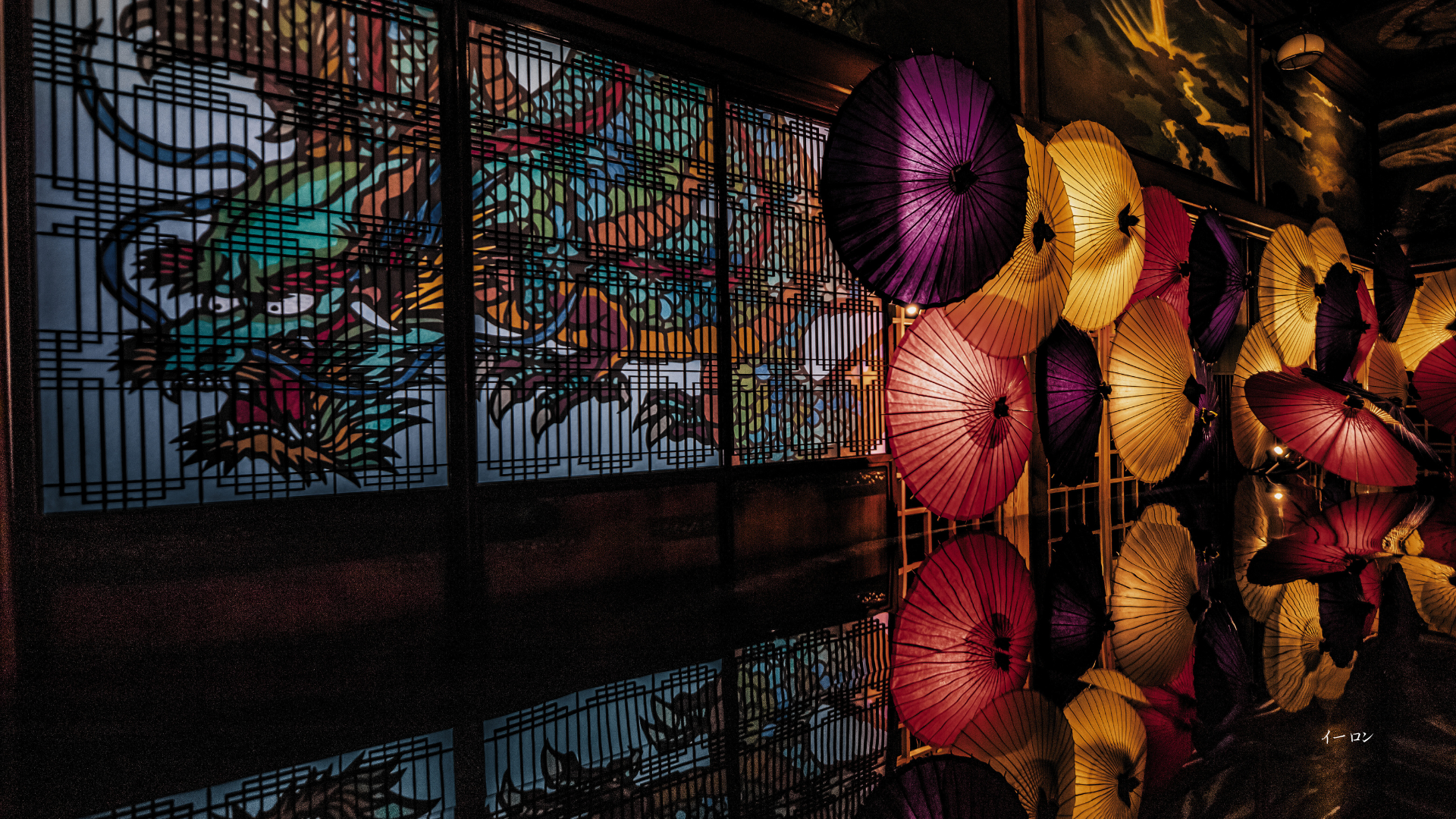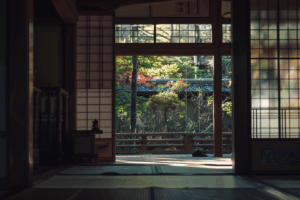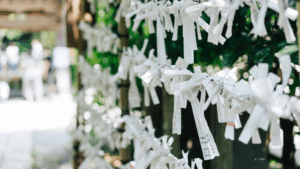In the Western imagination, Buddhist temples and Shinto shrines are serene sanctuaries of meditation and prayer. While this is certainly true, what most visitors to Japan never discover is the surprising tradition of architectural pranks, clever jokes, and intentional surprises hidden throughout these sacred spaces. These elements—what modern Japanese might call “YABAI” (mind-blowing, crazy, or incredible)—reveal a playful side of Japanese spirituality that has remained largely unknown to the outside world.
The Sacred Jump Scare: Karakuri Mechanisms in Temples
Perhaps the most startling example of this tradition is the “Bikkuri-butsu” (Surprise Buddha) found in certain regional temples across Japan. Dating back to the Kamakura period (1185-1333), these interactive religious installations were the medieval equivalent of a modern jump scare.
At Kannonji Temple in the mountains of Aomori Prefecture, unsuspecting pilgrims who peer into what appears to be a standard Buddha statue are shocked when a skeleton suddenly pops up from inside. The mechanism—a simple but effective spring device—has been frightening and delighting visitors for over 800 years.
“These devices weren’t just entertainment,” explains Dr. Takashi Yamamoto, a religious architecture specialist at Kyoto University. “They were designed to deliver visceral lessons about Buddhist concepts like impermanence (mujō) and the illusory nature of reality. When you’re startled by a mechanical skeleton, the teaching about death’s inevitability becomes much more memorable than through any sermon.”
Similar mechanisms exist at Daihōonji Temple in Kyoto, where stepping on a certain floorboard activates a hidden wire that drops a ghost effigy from the ceiling. In the Edo period (1603-1868), these temple “haunted houses” became popular attractions during Obon festival, when spirits of ancestors were believed to return to the mortal world.
Architectural Easter Eggs: Hidden Messages in Temple Design
Japanese temple builders have long incorporated secret jokes, social commentary, and even political satire into their architectural masterpieces.
At Nikkō Tōshōgū, the famous “sleeping cat” carving attracts thousands of tourists, but few notice the satirical relief hidden on its underside. When viewed from below (a perspective only possible during renovation work), the seemingly peaceful cat transforms into a hungry feline eyeing nearby sacred birds—a subtle critique of the shogunate government’s predatory relationship with ordinary citizens.
“Temple architecture was one of the few places where craftsmen could express political dissent without fear of repercussion,” notes architectural historian Maya Ishizawa. “Since these hidden carvings were only visible to other craftsmen during future renovations, they became a secret communication channel spanning centuries.”
This tradition of hidden commentary continues even in modern times. During the 2015 renovation of Sensōji in Tokyo, workers discovered a small carving from the 1950s reconstruction depicting a man reading a newspaper with the headline “ATOMIC BOMB DROPPED” – a poignant political statement hidden within Japan’s oldest temple.
The Naughty Side of Enlightenment: Playful and Profane Elements
Perhaps most surprising to Western visitors is the casual integration of sexual and scatological humor within sacred spaces. The most famous examples are the Tanuki (raccoon dog) figures with comically exaggerated testicles often found at minor shrines, but this tradition extends even to major temples.
At several ancient temples in the Kansai region, supporting beams hidden above ceiling panels feature explicit erotic carvings. These were not acts of vandalism but intentional creations meant to invite fertility, ward off fire (through the power of water symbolism), and remind monks of the earthly desires they were working to transcend.
“In Japanese spiritual traditions, the sacred and the profane aren’t separated as strictly as in Western religions,” explains religious studies professor Keiko Takahashi. “Bodily functions, sexuality, and humor were seen as natural parts of human existence, not shameful elements to be excluded from religious spaces.”
This integration extends to the famed Chōjū-jinbutsu-giga scrolls at Kōzan-ji Temple—often cited as the world’s first manga—which feature rabbits, frogs, and monkeys engaging in human activities, including explicit bodily functions. These 12th-century masterpieces were created by Buddhist priests themselves.
The Drunken Dragon: Humor in Sacred Art
The ceiling of Kyoto’s Tofuku-ji Temple holds one of the most charming examples of ancient Japanese religious humor. Among dozens of formally painted dragon medallions decorating the meditation hall is a single panel showing what can only be described as a drunken dragon with crossed eyes and a wobbly expression.
What makes this particularly notable is that the artist, breaking with the anonymity tradition, proudly signed just this panel—the medieval equivalent of sneaking a joke into a corporate presentation and taking full credit for it.
Similar humorous touches can be found throughout Japanese temple art. At Daigoji in Kyoto, one of the thousand hand-carved statues of Kannon (the bodhisattva of compassion) is secretly giving what appears to be a thumbs-up gesture instead of the prescribed mudra (ritual hand position). This small act of individuality has survived for over 900 years.
Modern Echoes: From Temple Pranks to Contemporary Culture
This tradition of hidden humor in sacred spaces has deeply influenced contemporary Japanese culture. The surprise mechanisms of ancient temples find modern expression in Japan’s famous surprise boxes (bikkuri-bako) and the “gotcha” moments in anime and video games.
Even Japan’s vibrant meme culture can trace its lineage to the visual jokes embedded in temple architecture—both share the quality of being simultaneously reverent and irreverent, serious and playful.
Contemporary Japanese digital artists are now exploring this tradition through new media. The digital art collective TeamLab’s immersive religious installations incorporate interactive elements that startle and amaze visitors, much like their ancient temple counterparts.
Experiencing Sacred Pranks Today
For visitors to Japan hoping to experience these “YABAI” elements themselves, most remain hidden in plain sight. Standard tourist routes rarely include the more playful aspects of Japanese religious architecture.
“The best approach is to visit smaller regional temples, especially during renovation periods when hidden elements might be temporarily exposed,” suggests cultural tour guide Yuki Tanaka. “Also, don’t be afraid to ask local priests about ‘omoshiroi’ (interesting) features in their temples—many are proud of these playful traditions and happy to share them with genuinely interested visitors.”
While some traditionalists have occasionally called for removing these elements during renovations, most Japanese cultural preservationists now recognize them as important aspects of Japan’s religious heritage—a reminder that spiritual depth and playful humor have always coexisted in Japanese religious life.
This uniquely Japanese tolerance for playfulness within sacred contexts offers a profound lesson for our modern world: that reverence and joy, spiritual depth and lighthearted humor, are not opposing forces but complementary elements of a fully integrated approach to the divine.



